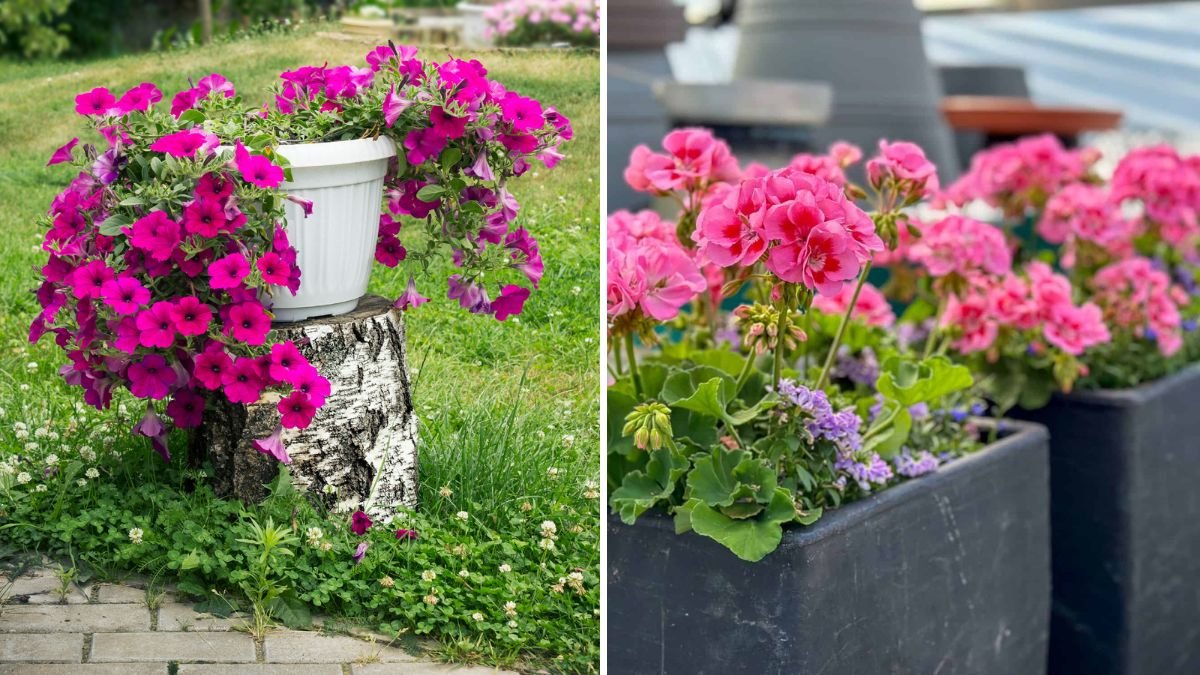Colorful annuals are a gardener’s delight, offering vibrant blooms that can brighten any space. For urban gardeners, balcony dwellers, or anyone with limited space, small pots provide the perfect opportunity to grow these flowering plants. Annuals complete their life cycle in one growing season, making them ideal for creating seasonal displays in confined spaces. With careful planning, appropriate soil, watering, and maintenance, small pots can yield stunning, continuous blooms throughout the season.
This article explores how to grow colorful annuals in small pots, including plant selection, container choice, soil, sunlight, watering, fertilization, pruning, and creative design ideas.
1. Understanding Annuals
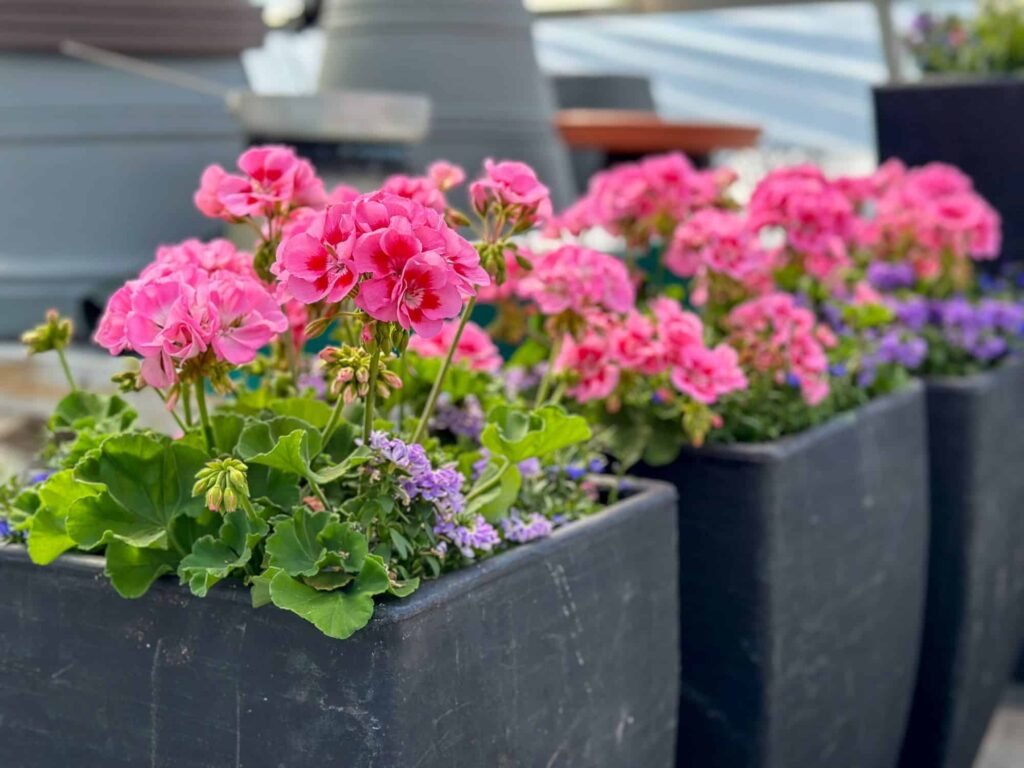
Annuals are plants that germinate, flower, produce seeds, and die within a single growing season. Unlike perennials, which return year after year, annuals provide:
- Quick growth and flowering: They produce blooms rapidly.
- Variety: A wide selection of colors, sizes, and textures.
- Seasonal impact: Ideal for seasonal color schemes or theme gardens.
Examples include petunias, marigolds, pansies, impatiens, begonias, zinnias, and geraniums. Choosing the right species ensures maximum bloom, even in small containers.
2. Choosing the Right Small Pots
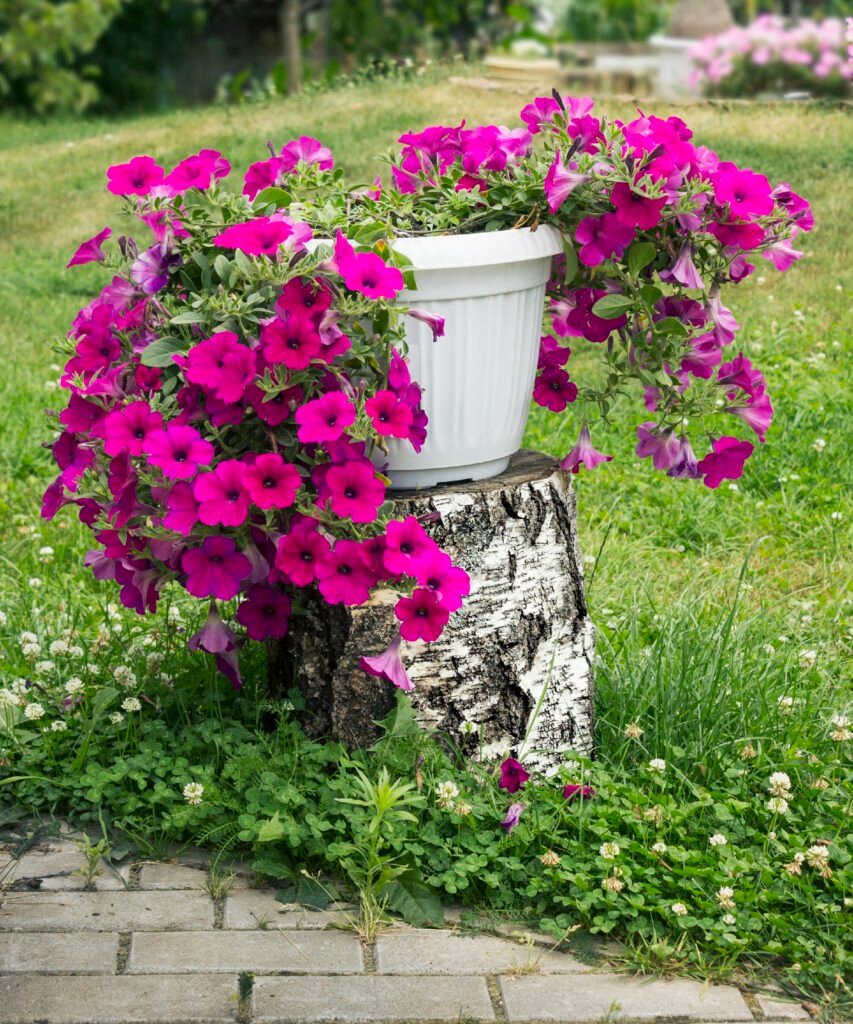
Selecting suitable pots is critical for healthy growth:
- Size: Small pots should be at least 6–8 inches deep and wide for compact annuals; trailing or bushy types may require 10–12 inches.
- Material: Plastic, ceramic, or clay. Plastic is lightweight and retains moisture, clay is porous and breathable but dries faster.
- Drainage: Ensure pots have drainage holes to prevent waterlogging, which can lead to root rot.
- Aesthetic Appeal: Match pot colors, textures, and shapes to your space and design theme.
Proper pot selection ensures roots have enough space, soil moisture is regulated, and plants remain visually attractive.
3. Soil Requirements for Small Pots
Small pots require a lightweight, nutrient-rich soil mix to support healthy growth:
- Well-Draining Mix: Combine potting soil with perlite, vermiculite, or coarse sand to prevent waterlogging.
- Moisture Retention: Incorporate peat moss, coconut coir, or compost to hold moisture without becoming soggy.
- Fertilizer Enrichment: Use slow-release granular fertilizer or mix in organic compost for consistent nutrition.
- pH Level: Most annuals prefer slightly acidic to neutral soil (pH 6.0–7.0).
Regularly check soil moisture and replenish nutrients for continuous, vibrant blooms in small containers.
4. Selecting Colorful Annuals for Small Pots
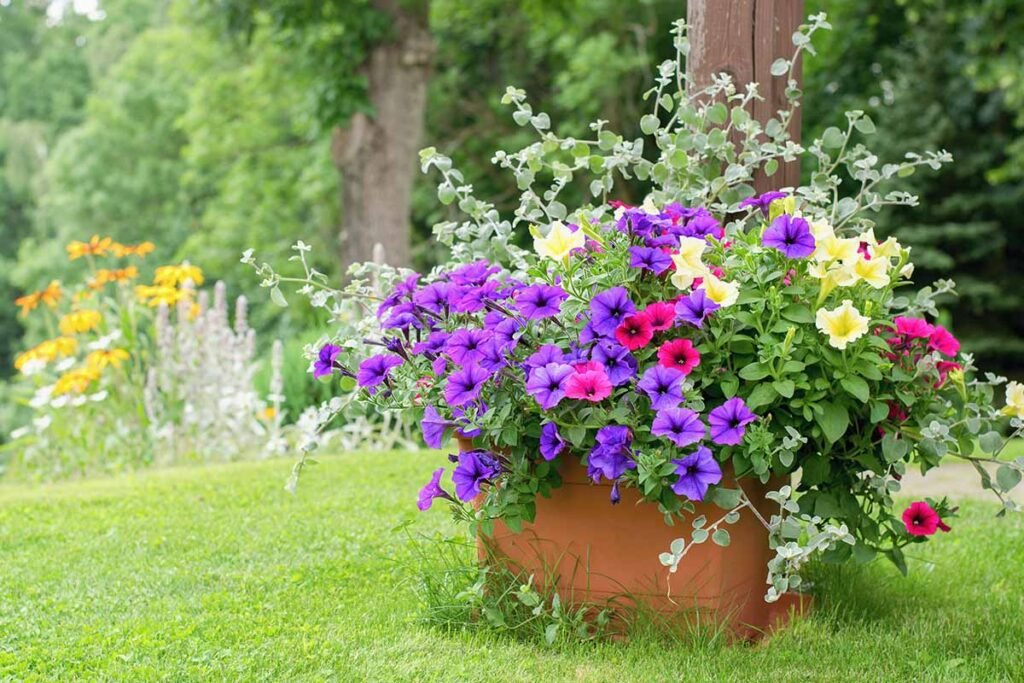
Some annuals are ideal for compact spaces:
- Petunias: Trailing varieties cascade beautifully over pot edges; thrive in full sun.
- Marigolds: Compact and bright, marigolds are low-maintenance and drought-tolerant.
- Impatiens: Perfect for shaded or partially shaded areas with vibrant, continuous blooms.
- Begonias: Excellent for both sun and shade, offering textured leaves and colorful flowers.
- Zinnias: Bright, daisy-like blooms; prefer full sun and moderate watering.
- Geraniums: Bushy growth, tolerant of partial sun, and long-lasting flowers.
- Pansies and Violas: Ideal for cooler seasons with vivid, delicate blooms.
Combining complementary colors and heights in small pots creates a dynamic and eye-catching display.
5. Sunlight and Placement
Annuals need the right light for optimal flowering:
- Full Sun Plants: Petunias, marigolds, zinnias, and geraniums require 6–8 hours of direct sunlight.
- Partial Shade Plants: Impatiens, begonias, and pansies thrive in filtered sunlight or morning sun with afternoon shade.
- Indoor or Balcony Placement: Ensure small pots are positioned where plants receive adequate light; rotate pots periodically for even growth.
Adequate sunlight enhances photosynthesis, encourages continuous blooms, and prevents leggy growth.
6. Watering Small Pots Efficiently
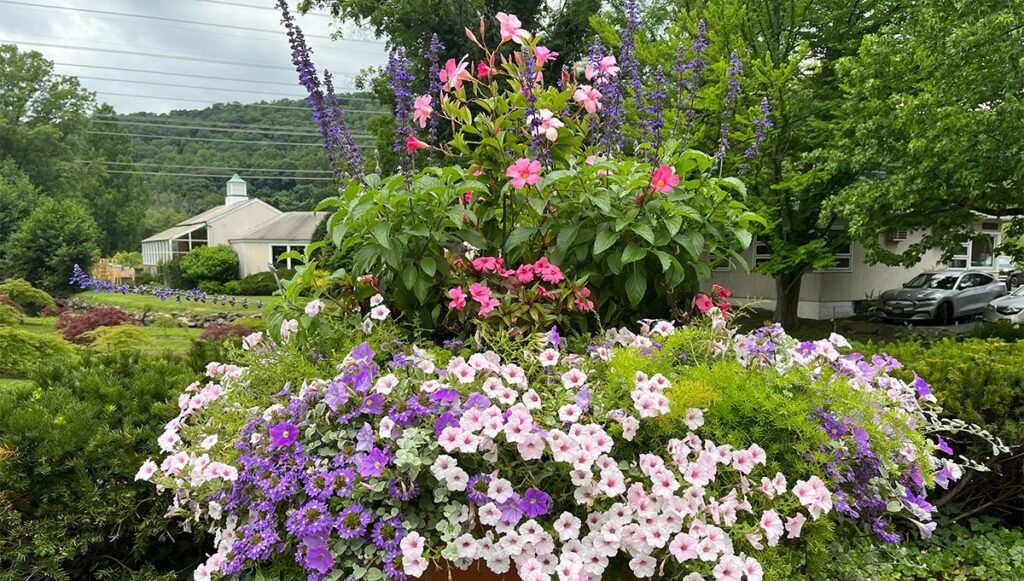
Small pots dry out quickly, so consistent watering is crucial:
- Check Soil Moisture: Stick a finger 1–2 inches into the soil. Water when the top layer is dry.
- Watering Method: Water slowly at the base of the plant to reach the root zone, avoiding wetting flowers and leaves.
- Avoid Overwatering: Excess water leads to root rot and fungal diseases.
- Mulching: A thin layer of mulch (peat, bark chips, or decorative stones) reduces evaporation.
Efficient watering promotes healthy growth and reduces stress on compact annuals.
7. Fertilization for Continuous Blooms
Annuals in small pots deplete nutrients faster than garden beds:
- Liquid Fertilizers: Apply balanced liquid fertilizer every 2–3 weeks to encourage flowering.
- Slow-Release Fertilizers: Incorporate at planting for steady nutrient availability.
- Organic Fertilizers: Compost tea or fish emulsion enrich soil without chemicals.
- Avoid Excess Nitrogen: Too much nitrogen produces lush foliage but fewer flowers.
Proper fertilization ensures continuous, vibrant blooms throughout the season.
8. Pruning and Deadheading
Maintaining compact growth and encouraging flowering requires regular care:
- Deadheading: Remove faded or spent blooms to promote new flower formation.
- Pinching: Trim tips of stems for bushier growth, especially in petunias and zinnias.
- Pruning Diseased Parts: Remove yellow, damaged, or diseased leaves to prevent the spread of infection.
Consistent pruning and deadheading maintain both aesthetics and plant health.
9. Creative Arrangement Ideas
Small pots allow for creativity in designing colorful displays:
- Single-Color Focus: Plant multiple pots of the same flower and color for a bold visual impact.
- Mixed Colors and Heights: Combine tall, medium, and trailing plants in one pot or multiple pots for depth and dimension.
- Thematic Planting: Use seasonal colors (spring pastels, summer brights, or autumn hues) to match décor.
- Vertical Stacking: Use small shelves, hanging baskets, or tiered planters to increase display area.
- Edge Cascading: Trailing annuals like petunias or lobelia over the pot edges soften hard lines and add elegance.
Creative arrangements can transform small balconies, windowsills, or indoor spaces into vibrant, seasonal showcases.
10. Seasonal Considerations
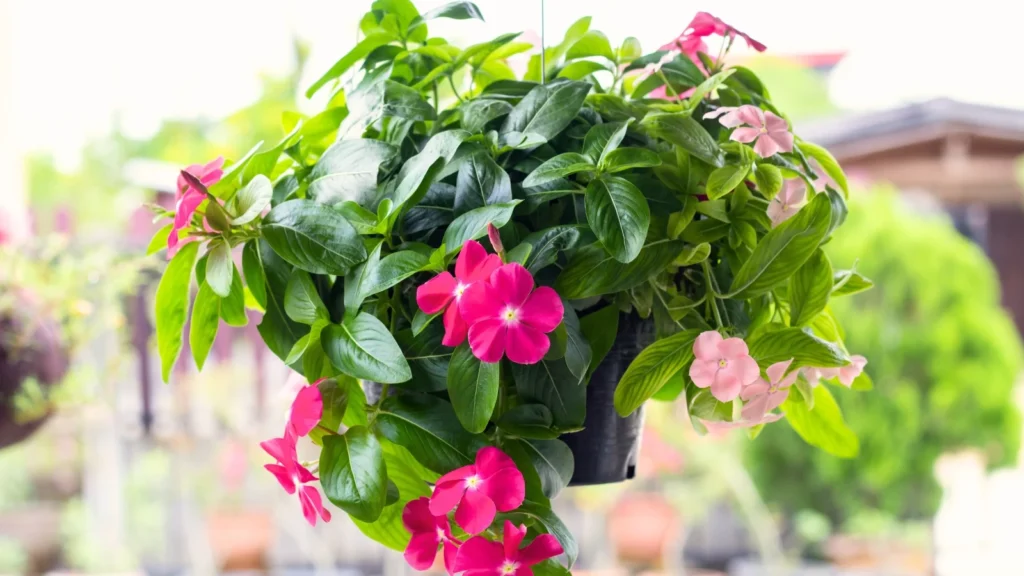
Annuals are seasonal and require replacement or rotation:
- Spring/Summer Annuals: Petunias, marigolds, zinnias, and geraniums flourish in warm months.
- Fall/Winter Annuals: Pansies, violas, and ornamental cabbages thrive in cooler weather.
- Indoor Conditions: Protect from frost and provide supplemental light during short daylight periods.
- Rotation Strategy: Plan pots in succession for continuous flowering, removing spent plants and replacing with seasonal varieties.
Seasonal rotation ensures a continuous display of color in small containers throughout the year.
11. Common Challenges and Solutions
Growing annuals in small pots comes with challenges:
- Limited Root Space: Choose compact or dwarf varieties and avoid overcrowding.
- Rapid Soil Drying: Use moisture-retentive soil and mulch; water regularly.
- Pest Problems: Watch for aphids, spider mites, or whiteflies. Use natural remedies or insecticidal soaps.
- Nutrient Deficiency: Fertilize regularly to maintain flower production.
- Leggy Growth: Provide adequate sunlight and pinch back stems to encourage bushiness.
Addressing these challenges promptly ensures healthy, vibrant plants.
12. Benefits of Growing Colorful Annuals in Small Pots
- Space Efficiency: Ideal for urban apartments, balconies, and small patios.
- Seasonal Flexibility: Easily change plant selection according to the season.
- Low Commitment: Annuals complete their life cycle in one season, requiring minimal long-term care.
- Aesthetic Appeal: Bright colors and lush blooms enhance indoor and outdoor spaces.
- Easy Maintenance: Small pots simplify watering, fertilizing, and pruning tasks.
- Accessibility: Pots can be moved for sunlight, protection, or décor purposes.
Container annuals provide instant gratification, seasonal beauty, and manageable care for urban and small-space gardeners.
Conclusion
Growing colorful annuals in small pots is an effective way to maximize limited space while creating vibrant, eye-catching displays. By selecting appropriate plant varieties, containers, soil, and placement, gardeners can enjoy lush blooms even in urban environments. Efficient watering, regular fertilization, deadheading, pruning, and seasonal rotation ensure continuous color and plant health throughout the growing season.
Small pots also encourage creativity, allowing gardeners to experiment with color combinations, plant heights, and vertical arrangements. Whether on a balcony, windowsill, or patio, annuals provide instant charm, fresh blooms, and a sense of accomplishment.
With proper care, attention, and strategic planning, small pots filled with colorful annuals can transform limited spaces into vibrant, blooming gardens, offering beauty, joy, and greenery year after year.
